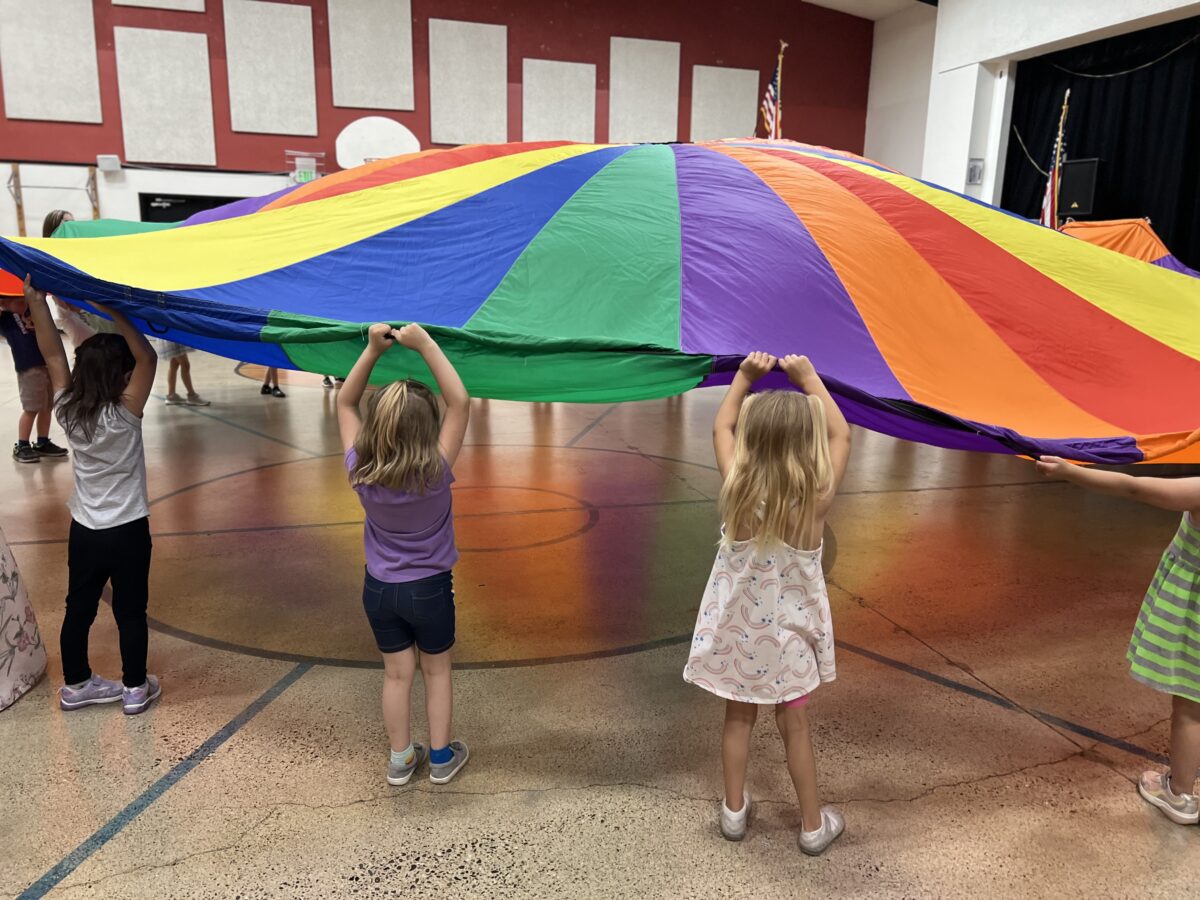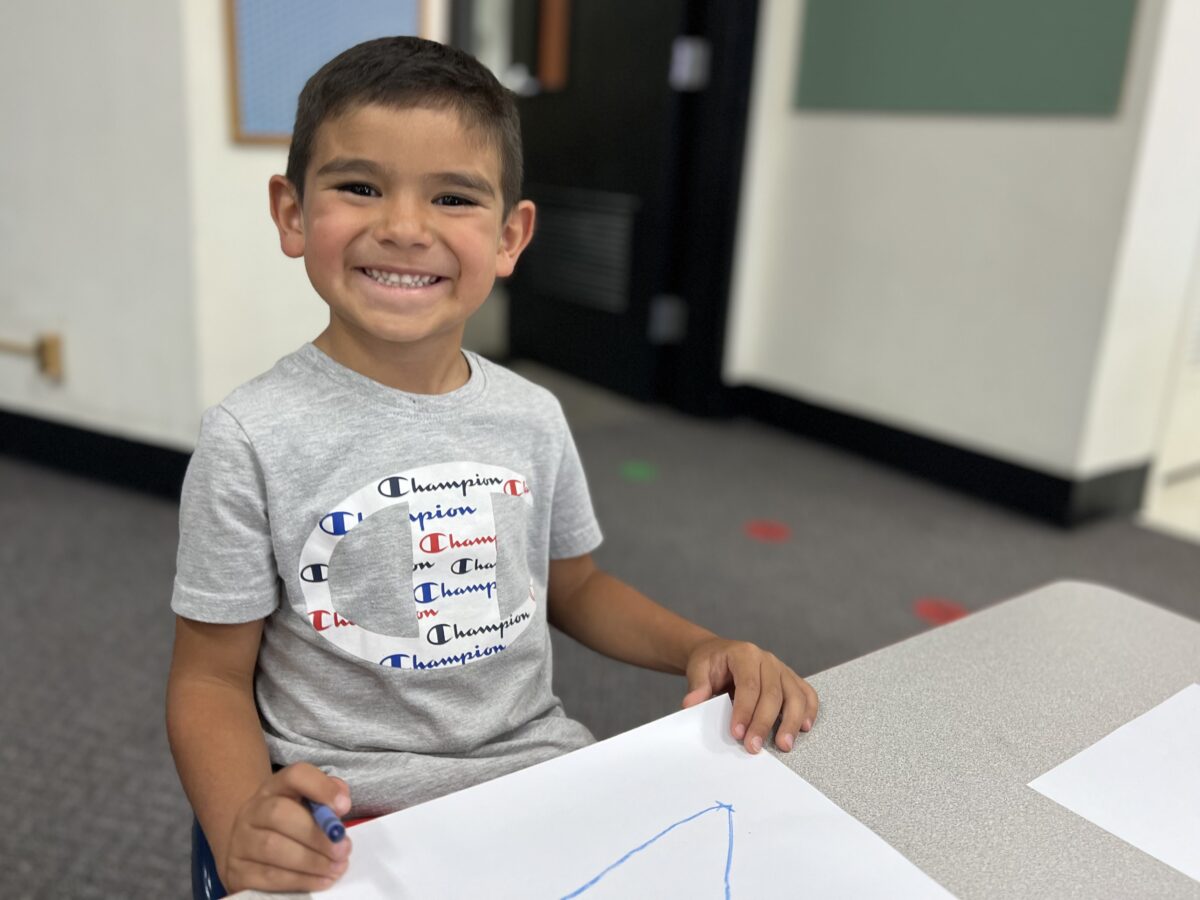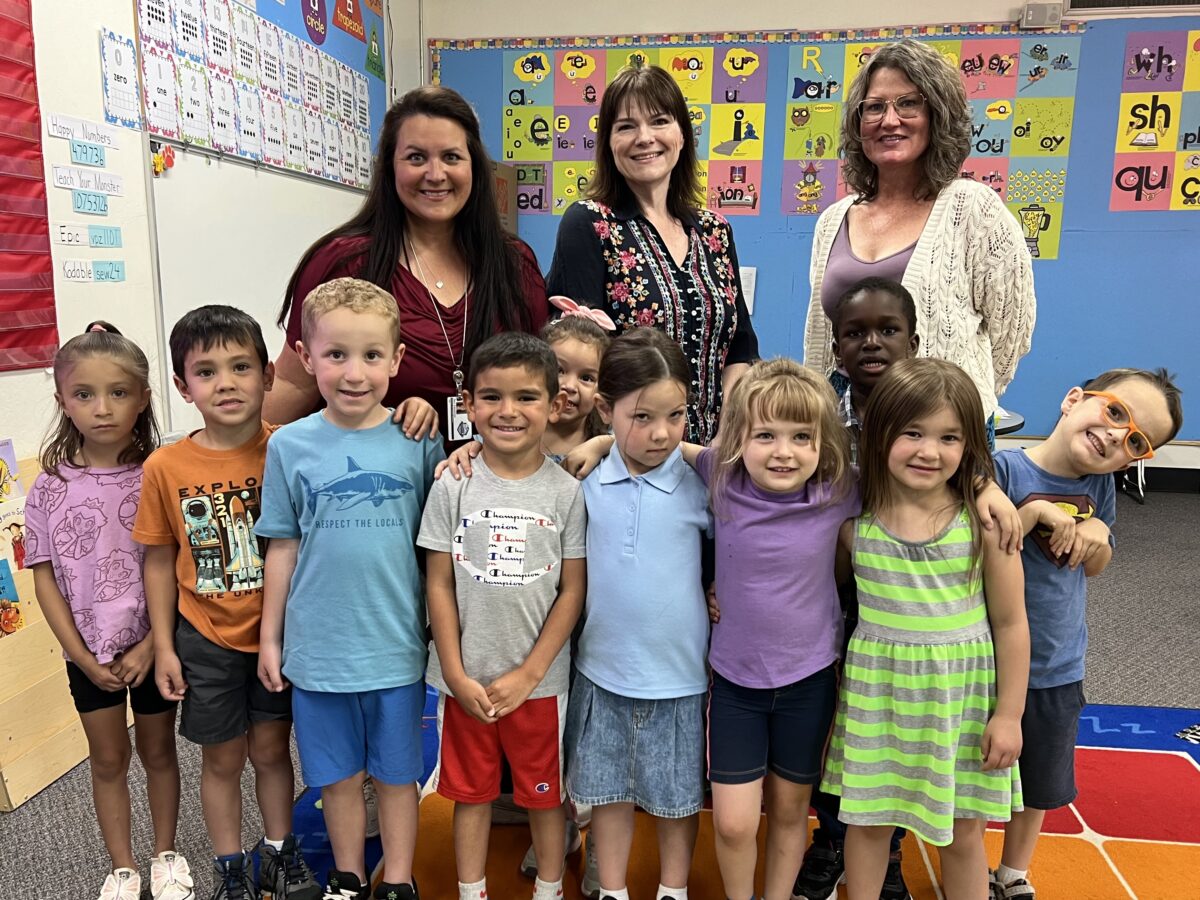When the Carson City School District saw a need to support kids who may not have had any socialization, pre-K or kindergarten experiences, they decided that creating a summer program where young kids could learn how to participate in school was the best option to prepare them.
At the halfway mark of the 12-day “Ready to Rock Kindergarten” program, staff and parents both seemed to have gotten into a positive groove. While The Nevada Independent interviewed the staff on June 12, children enrolled in this program participated in parachute games, coloring and singing.

Programs such as Ready to Rock are just one way education leaders are trying to ensure students succeed in kindergarten. Another strategy has been requiring children to be at least 5 years old before enrolling, rather than accepting some 4-year-olds.
Suzanne Mather, the mother of a child enrolled in the program, said that full school days are long and tiring compared to the half days that many kids and parents are used to. The summer program is only a half day, although Carson City elementary schools offer full-day kindergarten.
But she’s still “happy that [her son] gets a chance to get used to the big school without the cars, the traffic, and a million other kids.”
A big leap for young children
Several staff members, including Merri Pray, the professional learning and family engagement coordinator at the school district, mentioned that the first few weeks of school are usually rough for both kids and parents, whether that’s during the kindergarten readiness program or during kindergarten itself.
Pray said that last year, they had a “lot of anecdotal evidence” that showed the Ready to Rock program had benefited first-time students.
“We didn’t have the tears, the crying. They came excited to be at school,” Pray said.
Tara Sakelarios, a PE teacher and Ready to Rock program lead at Al Seeliger Elementary School, said that the program not only helps socialize kids but also helps them learn “simple” skills such as drinking from a water fountain or standing in line. Out of all the struggles she faces as a teacher during this program, Sakelarios says that the hardest learning curve for students is patience.
With the program only in its second year, many of enrolled students have older siblings who may not have had the chance to participate when they were headed toward kindergarten. Sakelarios has had students tell her how much their siblings are helping them get through the program, or even having their own realizations that they’re “going to be OK,” even when away from parents for long periods of time.
This year, the program has around 150 participants. It’s helping parents as well.
“The parents weren’t as apprehensive bringing their kids on day one of kindergarten because they already knew the school,” she added.

Although students may have different teachers in the Ready to Rock Kindergarten program and when starting kindergarten, Pray says that the teachers are firm believers in early education and that “they’re giving up three solid weeks of their summer to do this program, because they believe in the fact that our kids might need a little more help to be ready to rock kinder.”
Pray also said that parents are given resources during an end-of-program conference to show what their kids can work on. These resources include books and workbooks for them to work on throughout the remainder of the summer.
Raising the enrollment age
During the past two legislative sessions, state lawmakers passed bills that moved up the date by which incoming kindergartners need to reach the age of 5 in order to start school. The date was originally Sept. 30, but has since been moved to Aug. 1. Prior to this change, students could enroll in kindergarten before their fifth birthdays.
Pray said that before the change, schools typically saw “higher rates of students identified for special education and students identified as having extra needs,” adding that “behavioral needs tend to be those kids who aren’t quite developmentally ready.” She said raising the age from 4 to 5 was a good decision for both the district and the state.
Bonnie Madieros, the interventionist at Seeliger, said that she loves the readiness program and that she thinks requiring students to be 5 rather than 4 to enroll makes a big difference.
“I really do think socially [and] emotionally, they’re better off when they come in [at a] later [age],” she said.
Pray says that pre-K is available for those under 5, but that it’s not offered to all students.
“I think that the amount of kids who are able to access pre-K is too small. We have a very limited number of kids, kids who either have special needs, or kids who are 200 percent below poverty level, and are able to access pre-K services in Nevada, and I just don’t think that’s enough,” she said.
Those with kids participating in Ready to Rock are optimistic about how the transition to kindergarten will go now come August.

Elizabeth Sevier, a grandparent of a student, said that she thinks “it’s a great program because when the [kids start] something new, it can be really scary.”
Sevier also says that she thinks that this program prepares students to be “better off” and that they are “happier, less stressed, [and have] less anxiety.”

